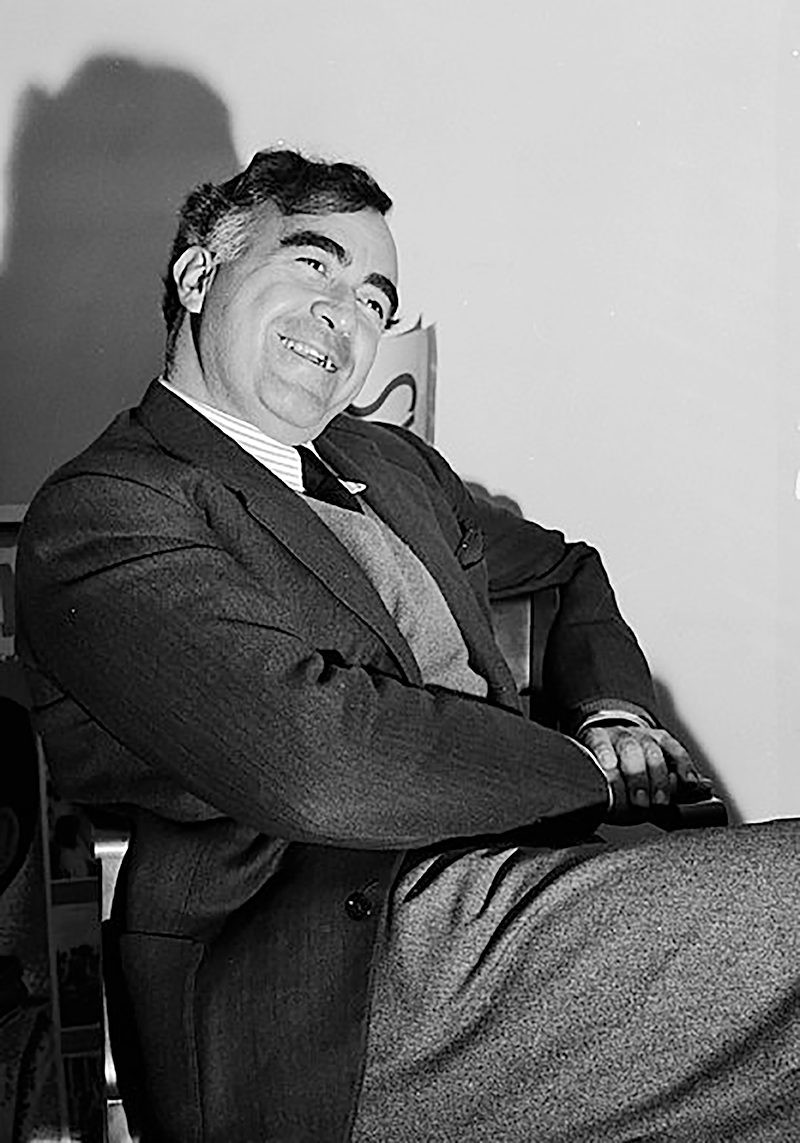Carlos Chávez

- Born: June 13, 1899 in Mexico City
- Died: August 2, 1978, Mexico City
Symphony No. 2, Sinfonía India
- Composed: 1935
- Premiere: January 23, 1936 on the CBS Radio Network, the composer conducting
- Duration: approx. 14 minutes
Carlos Chávez, the most important and influential figure in 20th-century Mexican music, devoted his life to raising the educational, concert and creative activities of his native land to the standards of the other great musical nations. His career included an enormous list of achievements that would have staggered a man of lesser energy and dedication: between 1928 and 1949, he founded and conducted Mexico’s first permanent professional orchestra, the Orquesta Sinfónica de México (now Orquesta Sinfónica Nacional); he was director of the National Conservatory of Music, where he revolutionized the curriculum by including the study of native music (1928–35); he was head of the Mexican Department of Fine Arts (1946–52); he initiated government-sponsored research into folklore and ancient instruments that led to the formation of a small ensemble of archaic Aztec and Nahua instruments; he championed the works not only of contemporary Mexican composers but also those from throughout the country’s history; he was Charles Eliot Norton Lecturer at Harvard University in 1958–59; he guest conducted many of the major orchestras in the western hemisphere; and he was one of the great composers of his generation.
Chávez studied all aspects of Mexican music, but he was especially drawn to that of the pre-conquest era. “Among the Aztecs,” he wrote, “music achieved the marks of a true artistic culture. It filled a role of real social importance in government, religion and war. It was a true state institution, and was the object of special study and cultivation.” It was to this lofty plateau that Chávez sought to return modern Mexican music. In his compositions, that premise meant combining the ethos and characteristics of native music with the techniques and craftsmanship of the European tradition to produce something specifically Mexican. While he seldom quoted existing folk songs in his works, their component rhythms, textures and melodic leadings are integral to his style. Aaron Copland, deeply respectful of Chávez’s achievement, wrote, “Here and there perhaps a recognizably native turn of phrase can be discerned, but as a whole the folk element has been replaced by a more subtle sense of national characteristics…. I feel that no other composer — not even Béla Bartók or Manuel de Falla — has succeeded so well in using folk material in its pure form while also solving the problem of its complete amalgamation into an art form.”
In 1935, William S. Paley, founder of the Columbia Broadcasting System, invited Chávez to conduct one of his own compositions with the CBS Orchestra on a radio broadcast. Chávez chose to write a new piece for the occasion, and, on January 23, 1936, he premiered what became his most popular work — the Sinfonía India. The score takes its name from the composer’s use of several melodies of Mexican Indian derivation, namely from the Seri and Yaqui of Sonora and the Huichol of Nayarit, and from his use of several indigenous percussion instruments, including clay rattle, metal rattle, water gourd, tenabari (a string of butterfly cocoons), grijutian (a string of deer hooves) and raspador (a scraper). (The composer allowed substitutes from the more common percussion if these instruments are unavailable.) The practice of actual melodic quotation was unusual for Chávez, who, like Bartók, preferred to create his own themes based on the characteristic gestures, rhythms and scales of his country’s indigenous music. In the wake of Sinfonía India’s success, Chávez was, perhaps inevitably, labeled as a “nationalist” composer, but Cuban composer Julián Orbón, in his liner notes for Eduardo Mata’s recordings of the composer’s six symphonies on the Vox label, warns that this music must not be regarded as simply provincial in scope: “Assuming that a work has intrinsic quality, its nationalism is nothing more than the regional expression of permanent and universal values.”
Chávez considered his one-movement Sinfonía India to be a condensed version of the traditional symphonic plan, not unlike the tightly unified form Liszt had created for his tone poems. Following an energetic introduction in vigorous mixed meters, the first theme, based on a Huichol melody, is presented by the violins and oboe. The contrasting second theme is a Yaqui tune given with touching simplicity by the E-flat clarinet. In place of a central development section, Chávez composed what he termed a “slow movement,” based on a step-wise Sonoran melody in triple meter. After a recapitulation of the first and second themes, a galvanic, whirling “finale” is constructed upon a Seri melody treated in ostinato fashion.
—Dr. Richard E. Rodda